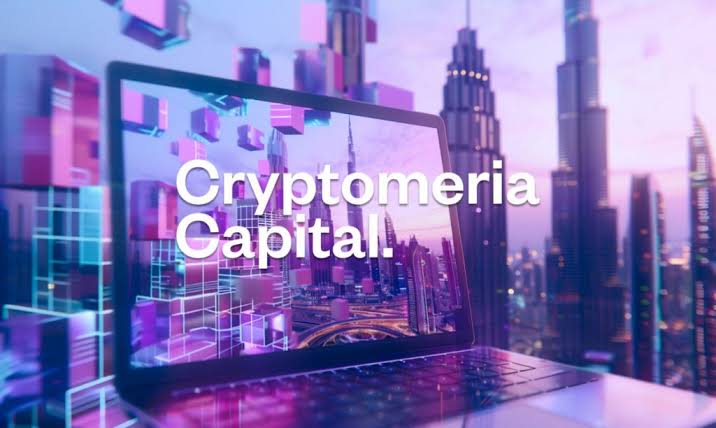
Cryptomeria Capital Will Introduce DePIN Report On April 17
Cryptomeria Capital’s upcoming analysis highlights the burgeoning DePIN industry, projecting its market to grow significantly by 2028.
One of the most promising possibilities for 2024, toward the end of 2023, was the decentralized physical infrastructure network (dePIN) industry.
Currently, the DePIN industry’s total addressable market stands at $2.2 trillion, but projections indicate it could surge to $3.5 trillion by 2028, despite the real-world economy’s valuation in the hundreds of trillions of dollars. Some of society’s most basic problems may be amenable to DePIN projects’ use of blockchain technology, token incentives, and Internet capabilities.
This week, on April 17th, at the Hack Seasons conference in Dubai, Cryptomeria Capital will unveil “The State of DePIN 2024,” their most recent in-depth analysis examining the constantly evolving dePIN scene. An era of more efficient, equitable, and community-engaged infrastructure construction is about to begin, and this paper stresses how important this strategy is.
Cryptomeria Capital is Offering a thorough examination of the industry, project comparisons, and a plethora of priceless insights, the new research from the venture capital firm is the most thorough study on the subject to date. The Cryptomeria Capital study provides an ecosystem map and an overview of DePIN’s architecture, delving into the fascinating world of data storage, cloud computing, wireless and sensor networks, and a host of other initiatives in great detail. Also covered are the upcoming changes in this space, as well as an analysis of how DePIN fits in with AI and zero-knowledge (ZK) technology.
Notable companies, including Filecoin, Arweave, Storj, Sia, BNB Greenfield, ZUS (formerly 0Chain), OORT (previously Computecoin Network), 4EVERLAND, CESS (Cumulus Encrypted Storage System), and GlacierDB (spanning storage solutions), have contributed to the research. We also include Render, Theta, Akash, HOLO, Livepeer, Golem, Io.Net, Dynex, Gensyn, and Web3mine, all of which address different areas of computing. We also include the following wireless network-centric features: Helium, Althea, Wayru Network, FOAM, WiFi Map, Andrena, Drop Wireless, Chirp, Grass (Wynd Network), and Meson Network. These are some examples of sensor networks: Hivemapper, DIMO, WeatherXM, Natix, GEODNET, Silencio, Soarchain, Spexigon, Drife, and Arkreen. The study covers the ZK universe’s zkSync Era, Scroll, Starknet, Polygon zkEVM, and Manta Networks.
The State of DePIN 2024, which Cyrptomeria Capital will unveil has already attracted a lot of attention from Web3 enthusiasts, investment institutions, and projects since it was first presented by Alex Mukhin, co-founder and managing partner at Cryptomeria Capital, at last week’s 2024 DePIN Global Hardware Summit in Hong Kong, organized by JDI Global. On April 17th, as part of the TOKEN2049 Dubai conference, the media will present its highly anticipated conference, Hack Seasons, in Dubai. We anticipate the release of the complete report at this event which Cryptomeria Capital will introduce.
An Extensive Examination of the DePIN Environment
In response to the present problems, the DePIN industry is leading the charge to transform cloud data storage. The paper states that by 2023, over 60% of corporate data will shift to cloud storage, a significant increase from 30% in 2015. In just seven years, cloud usage has doubled, and this upward trend shows that momentum is continuing. The continuous expansion highlights how companies are becoming more dependent on cloud technologies to handle and store their data. Information security plays a key role in modern business models, as evidenced by the fact that 95% of companies increasingly emphasize multi-cloud solutions.
In addition, by addressing the difficulties of scalability, security, and the high prices associated with conventional cloud services, decentralized computing has the potential to completely transform the cloud computing industry. The increasing need for computational resources caused by AI and ML highlights the report’s claims about the cost-effectiveness and performance advantages of decentralized computing systems.
There has been a marked improvement in privacy, security, and innovation with the introduction of blockchain technology. The “Wireless” DePin segment, which stands for Decentralized Privacy and Integrity, signals a new way of thinking about the safety and reliability of wireless networks. Adopting Open RAN for more efficient and adaptable networks, integrating AI for improved network operations, and further densifying 5G to satisfy low-latency demands are some of the important developments highlighted in the research for 2024.
Research into the field of sensor networks, which are essential to the IoT, shows significant growth, especially since 2020, when the number of IoT devices surpassed that of non-IoT devices. This spike is impacting industries like healthcare, smart cities, and transportation, indicating a trend toward increased device interconnection. Emerging apps provide real-time updates and speedier mapping capabilities, surpassing traditional services like Google Maps, highlighting the notable expansion potential of the navigation and mapping business.
The study investigates projects that use blockchains as an infrastructure layer. These projects include Solana, Polkadot, Polygon, Ethereum, Cosmos SDK, Layer 1s, and dePIN-focused blockchains. The network choice greatly affects the efficiency, safety, and efficacy of DePIN programs, making it crucial.





